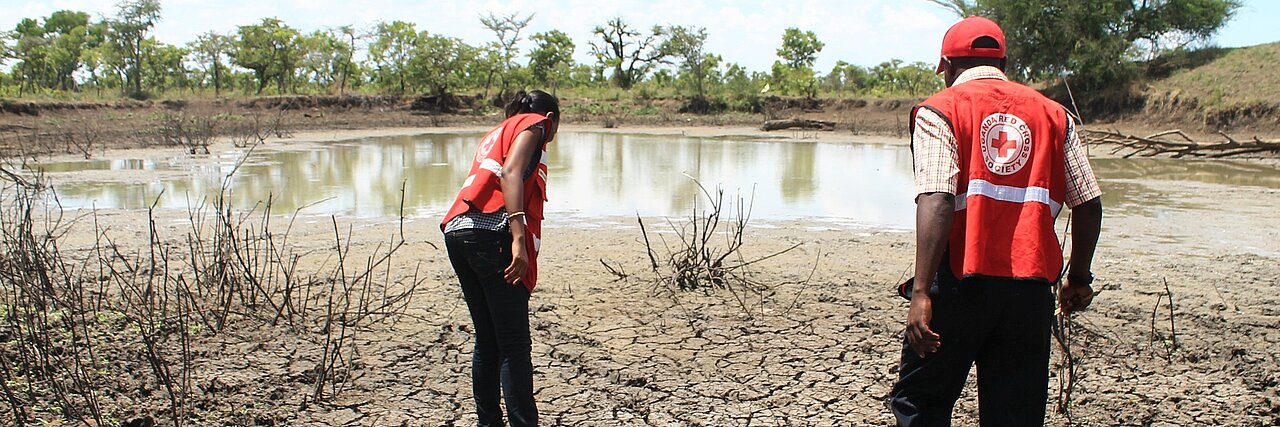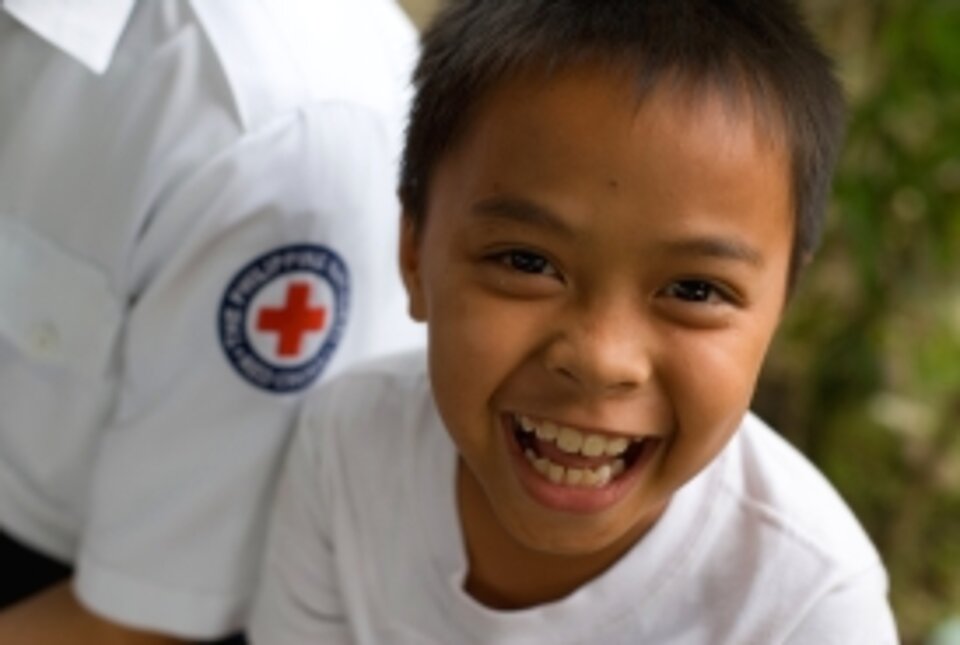
The state of Uganda, which is located in central Africa, is marked by civil war episodes, drought, crop failures and epidemics. Many people from South Sudan flee to Uganda. But the East African country reaches the limits of its capacity to supply the refugees.
The GRC supports the Ugandan Red Cross (URCS) in various actions to better cope with the consequences of the abuses and to stabilize water and sanitation.
Living with climate change
The Central African state of Uganda is a country characterised by the aftermath of a civil war, periods of drought, crop failures and epidemics. The GRC is supporting the Ugandan Red Cross (URCS) in a number of actions in order to better cope with the resulting situation.
![[Translate to Englisch:] Uganda: Vertrauensvolle Zusammenarbeit mit dem Ugandischen Roten Kreuz [Translate to Englisch:] Die Bevölkerung wird für den Klimawandel vorbereitet](/fileadmin/_processed_/1/c/csm_170224_uganda_01_drk_b7677cc904.jpg)
Resettlement of the population
The collaboration between GRC and the Ugandan Red Cross (URCS) is based on a spirit of trust stablished over many years of cooperation. For the last six years the GRC has supported the URCS in the realisation of its projects, e.g. in the Karamoja and Teso regions, areas which have suffered from armed skirmishes over many decades. Some 50 % of the population are currently considered internally displaced persons and their resettlement is still ongoing. As a result of climate change, the areas suffer regularly from landslides, flash floods and droughts as well as extreme deforestation.
Coping with the consequences of displacement and climate change
Other challenges for Karamoja and Teso regions are chronic food shortages, contaminated water supplies and poor hygiene conditions. All of which allow illnesses such as skin diseases and diarrhoea, cholera and hepatitis to occur more frequently. To date the illnesses have, however, been quickly contained in cooperation with the WHO and the responsible government offices.
Education and support in dealing with climate change
Long-term projects are intended during a transitionary period to provide help for inhabitants subsisting from agriculture and livestock in order to better cope with the consequences of armed conflicts and climate change. Thus, the resilience of target communities with regard to climate change and disaster risk reduction is improved.
The German Red Cross is working with the URCS on a six-year pilot project involving the following measures:
- Educating the population about the risks of climate change;
- Timely announcement of extreme weather events;Analysis of agricultural methods and existing water distribution systems;
- Development of adapted and improved techniques and establishing corresponding infrastructures;
- Supporting farmers by diversifying crops adapted to the climate and improving agricultural production;
- Preventing soil erosion and the siltation of dams and water holes;
- Ensuring access to clean water for personal consumption and agriculture;
- Capping deforestation and soil erosion by using energy saving methods;
- Developing awareness of climate-related disasters and development of appropriate early warning systems and contingency plans;
- Construction of 2000 flood-proof houses.
3 examples of support measures in Uganda
Help for Uganda: Extract of current and successfully implemented projects
Region: Karamoja and Teso
Duration: January 2013 to December 2018
Project volume: 2.2 million Euro
Finance: Federal Ministry for Economic Cooperation and Development
Partners: Ugandan Red Cross (URCS), Red Cross Climate Centre(RCCC)

![[Translate to Englisch:] Uganda: Unterstützung beim Gemüseanbau [Translate to Englisch:] Uganda - Spenden ermöglichen Unterstützung in der Landwirtschaft](/fileadmin/_processed_/b/e/csm_artikelbild_Uganda_Klimawandel_f6c084591b.jpg)
![[Translate to Englisch:] Uganda: Brunnen verbessern die Wasserversorgung [Translate to Englisch:] Spenden für Uganda helfen beim Bau von Brunnen und Latrinen](/fileadmin/_processed_/9/1/csm_artikelbild_Uganda_Fluechtlinge_7a4b2ec654.jpg)
![[Translate to Englisch:] Uganda: Schutz vor Überschwemmungen [Translate to Englisch:] Spenden in Uganda ermöglichen die Anfertigung vin überschwemmungssicheren Hütten](/fileadmin/_processed_/c/e/csm_artikelbild_Uganda_Starthilfe3_32f74d9eac.jpg)